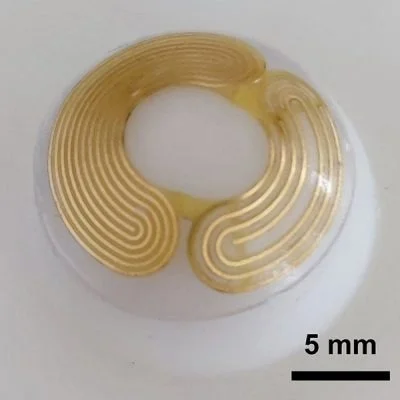

Glaucoma Today
Learn how eye pressure can be monitored day and night, and how continuous monitoring protects your vision when you have glaucoma.
Glaucoma is a serious eye disease that can cause vision loss if it is not managed properly. One of the most important ways to track glaucoma is by measuring intraocular pressure (IOP), or the pressure inside the eye. The most common method for measuring IOP is called Goldmann applanation tonometry (GAT), but it has some drawbacks, so researchers have developed new ways to monitor IOP continuously to help improve glaucoma treatment.*
GAT measures IOP by flattening the cornea and using a mathematical formula to calculate the pressure. This method assumes that every cornea is the same, however, which is not true. The thickness, shape, and stiffness of the cornea vary from person to person, which can lead to inaccurate readings.
Another major problem with GAT is that, since GAT is performed by your eye doctor during office visits, it only measures your eye pressure at one point in time, even though IOP changes throughout the day. Many patients also experience high eye pressure at night, when they’re not being tested. Some studies suggest that large pressure fluctuations can increase the risk of glaucoma worsening.
To provide a more complete picture of eye pressure changes, researchers have developed several new types of IOP-monitoring devices. These include implanted sensors, microfluidic systems, and smart contact lenses.
For patients who prefer noninvasive options, smart contact lenses have been developed to track IOP. The Triggerfish contact lens detects changes in the shape of the eye, which may indicate shifts in pressure. It does not directly measure IOP, however. A newer version, the Pressure-Measuring Contact Lens (PMCL), has an embedded sensor that can provide more accurate readings.

For home use, some patients can monitor their own IOP with a rebound tonometer, such as the iCare Home device. While not as precise as GAT, these devices allow patients to track their eye pressure trends over time. Some people find home monitoring helpful, but others may struggle to use the device correctly. You can work with your doctor to determine whether or not you are suited for this type of monitoring.
Measuring IOP is essential for managing glaucoma, but traditional methods like GAT have limitations. New devices—such as implanted sensors, microfluidic systems, smart contact lenses, and at-home tonometers—offer ways to track IOP more accurately and continuously. While some of these options require surgery, others are noninvasive or designed specifically for home use. As technology continues to improve, doctors will have better tools to help you monitor your eye pressure and protect your vision.
*Meier-Gibbons, F. (2024, July/August). Continuous IOP Monitoring. Glaucoma Today. https://glaucomatoday.com/articles/2024-july-aug/continuous-iop-monitoring
Featured Image: iCare. (n.d.). iCare HOME2. iCare. Retrieved February 11, 2025, from https://www.icare-world.com/us/product/icare-home2/
Responsum Health closely vets all sources to ensure that we always provide you with high-quality, reliable information. We do not, however, endorse or recommend any specific providers, treatments, or products, and the use of a given source does not imply an endorsement of any provider, treatment, medication, or procedure discussed within.
Source: {{articlecontent.article.sourceName}}
Receive daily updated expert-reviewed article summaries. Everything you need to know from discoveries, treatments, and living tips!
Already a Responsum member?
Available for Apple iOS and Android
Add Comments
Cancel